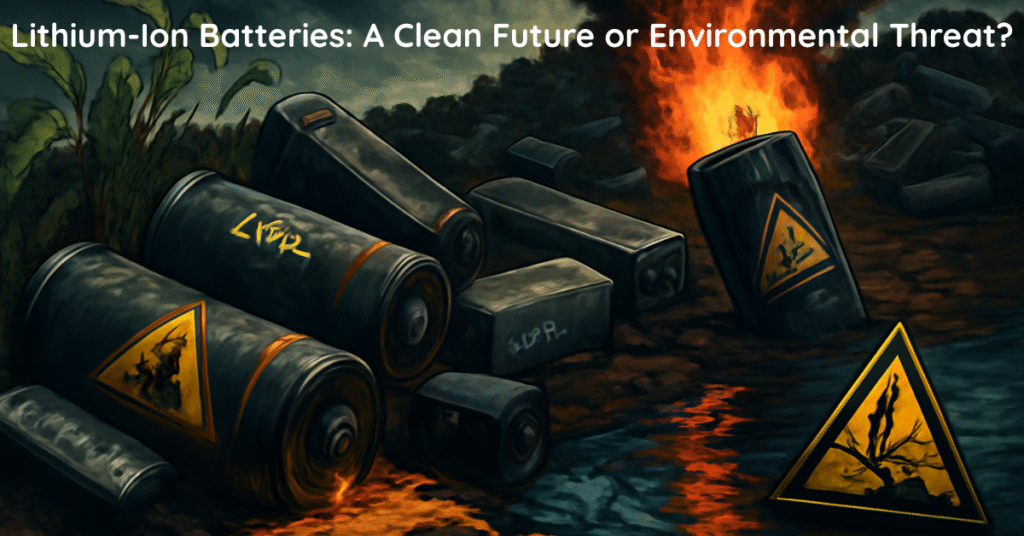The Hidden Environmental Hazards of Disposing Lithium-Ion Batteries
In our technology-driven age, lithium-ion batteries have become almost invisible companions. They keep our phones charged, run our laptops, and power many electric vehicles. While these batteries play a crucial role in daily life, their story doesn’t end when we stop using them. What happens after these batteries are thrown away holds real consequences for our environment.
Toxic Metals Seeping Into Nature:
When a lithium-ion battery ends up in a landfill, it doesn’t simply fade away. Over time, the metals inside—such as lithium, cobalt, and nickel—can trickle into the surrounding soil and water. Unlike biodegradable waste, these metals do not break down or vanish; instead, they gather in the earth, sometimes making their way into streams and groundwater. This kind of contamination is hazardous for plants and animals, and it can even affect local drinking water for people living nearby.
Unexpected Fire Risks:
There’s another danger many people don’t realize. Damaged or improperly discarded lithium-ion batteries are known to start fires. Even a single battery, if ruptured or subjected to heat, can overheat and burst into flames. Fires caused by batteries can be extremely difficult to put out, often burning hotter and longer than typical fires. These incidents pose threats to waste workers and can damage facilities as well as harm the environment by releasing toxic smoke.
Electronic Waste Doesn’t Disappear:
Unlike apple peels or paper, a lithium-ion battery will persist in the environment for a long time. As more and more devices use these batteries, the world is facing a mounting pile of electronic waste. Unmanaged, these dead batteries clutter landfills, taking up space and slowly leaking their harmful contents over many years.
Recycling Is Still a Challenge:
While recycling old batteries can reclaim valuable metals and reduce environmental harm, the reality is far from ideal. Many cities and regions still lack the facilities or systems needed to collect and safely process lithium-ion batteries. Instead of being recycled, most used batteries still end up in the trash, missing the opportunity to recover useful materials and reduce pollution.
Environmental Impact Begins With Manufacturing:
It’s not just disposal that causes damage—the battery manufacturing process itself leaves a heavy footprint. To produce a single lithium-ion battery, companies extract metals from the ground, often damaging natural landscapes and endangering wildlife habitats. The process also uses significant amounts of energy, adding more greenhouse gases to the atmosphere and contributing to climate change.
Meeting the Challenge:
With the use of electronic devices on the rise, the threat posed by old lithium-ion batteries is growing. There is an urgent need for more widespread recycling programs as well as better education on how to dispose of batteries responsibly. By returning spent batteries to authorized recycling centers, supporting policies that require manufacturers to take responsibility for the entire battery life cycle, and choosing products designed for easy recycling, we can help ease the environmental toll.
Conclusion;
Our reliance on lithium-ion batteries is unlikely to diminish anytime soon. However, by understanding the risks these batteries pose once they reach the end of their useful life, we can make smarter decisions—both as individuals and as a society. Every step toward proper disposal and mindful manufacturing can help protect the environment from the hidden dangers of lithium-ion battery waste.






